Tiruvanaikaval or Tiruvanaikoil or Tiruvanaika is an ancient Shiva temple said to have been built by Kochengannan Chola, one of the early Chola kings, who had in all built over 70 temples and later attained sainthood. This temple is not only one of the ‘Paadal Petra Sthalam’ but, also one of the five temples where Shiva manifests Himself in the form of different natural elements. The Pancha Bhoota sthalams as tehse are called are: 1) Tiruvanaikaval Jambukeswarar representing WATER 2) Chidambaram Natarajar representing SKY 3) Tiruvannamalai Arunachaleswarar representing FIRE 4) Kanchipuram Ekambareeswarar representing EARTH 5) Kalahasti Kalhasteeswarar representing AIR. An amazing coincidence is that all these five temples representing the five elements are almost in a straight line geographically, even if situated miles apart. Some scientific reasoning, our ancestors knew, that we are yet to decipher.
The Tiruvanaikaval temple of Jambukeswarar is equally well known for his consort Akhilandeswari. The temple is located on the island of Srirangam , at a short distance from the Ranganathaswamy temple. We set out by an autorickshaw at 6.30 AM, and passing the Ranganathaswamy Raja gopuram, we went up a bridge and coming down on the other side, we were in Tiruvanaikaval.
There was a big board asking us to deposit our mobiles at the counter as they were strictly not permitted inside. We checked with the shop where he had removed our shoes and he mentioned we could carry our mobiles, as it was only after 9 AM, they were disallowed. We would learn later, why.
Walking through the long corridors with amazing carvings on the pillars, we were soon before the main door of Lord Jambukeswarar, that was yet to be opened. Crowd was building up gradually and a middle-aged devotee sat there singing religious songs in a voice that echoed beautifully in the temple. There is a special darshan queue for Rs.25 but, as the common line itself was not too long (we were about tenth in the line), we stayed put. Finally, at around 7.15 AM, the doors opened and we were allowed inside another small hall. The floor was wet, and we could see that the sanctum sanctorum was at a lower level. Yes, devotees have to climb down a small flight of stairs to have darshan. Only 5-6 people were being allowed to go down, while the rest waited. Meanwhile, the few who had opted for special darshan had come in through a different way, at a slightly lower level and were seen having darshan from the rear, through a small window made up of nine holes. We were now asked to step down into the sanctum. It is so small that one has to bend at the entrance slightly to get in. The place can actually hold only 5-6 people apart from the priest. Jambukeswarar shivling shown in all its glory and there was a stream of water below it., which the priest explained was from the Kaveri river. Had never seen anything like this before, where the shivling is partly under water. Hence it is known as Appu Lingam, as well. Ha, the Pancha Bhoota sthalam for Water, indeed. We gingerly made our way up the narrow stairs, even as the next batch of devotees was getting down.
We walked out on to the outer prakara or courtyard that was truly massive with its mandapams and pavilions. As we walked the legends of Lord Jambukeswarar came to our minds. There are actually two of them associated with Jambukeswarar. One has it that, while Shiva was meditating in Kailash, Parvati playfully mocked Him. This angered Shiva, who banished Pravati to earth and asked her to observe penance. Parvati created a lingam from waters of the Kaveri and sat below a ‘jamun’ or rose-apple tree and started her penance. The sthala vriksham of this temple is the Jamun tree. Finally, Shiva appeared before Parvati and gave her an upadesha. He came to be called Jambukeswarar.
Another legend has it that there were two staunch disciples of Shiva named Malyavan and Pushpadanta, who were forever fighting with each other. Once during a conflict, they cursed each other and one became a spider and the other an elephant. Both the spider and the elephant used to worship the shivling under the jamun trees. The spider would lovingly spin a web on top of the lingam, as though to protect it and, the elephant thinking it to be dirt would splash water to clean it up. This continued for a while until one day, the angry spider entered the elephant’s trunk, biting it to death and also getting killed in the bargain. Shiva, pleased with the devotion of the duo, relieved them from their curses. It is here, at this point that legend dovetails into history. It is believed that the spider was reborn as Kochengannan (the king who built this temple) and remembering his previous birth, he made sure that the entrance to the sanctum was so narrow and small, that not even a baby elephant could get in. A spider with an elephantine memory, one may say.
Time now for the sannadhi of Akhilandeswari, the one who lords over the whole world. She is supposed to have learnt many cosmic truths from Shiva Himself. It is believed Akhilandeswari bestows devotees with intelligence and good education, having been a student Herself. It is said that over time, the intense power and splendor created an overwhelming Dharmic force, that worshippers were unable to face. Her sanctum resonated with divine ferocity. Adi Sankaracharya who visited this temple, sought to balance Her ferocity with Her benevolent, motherly form. He did two things — 1) He got an idol of Prasanna Ganapathy, Akhilandeswari’s son installed right opposite Her sanctum, to bring up Her motherly feelings and calm Her down. 2) He consecrated a pair of Sri Chakra earrings ( Thaatankas), of mystical geometric patterns, symbolising the union of Shiv and Shakti, and bringing in harmony.
As we prayed to Akhilandeswari, my wife asked the priest about the Sri Chakra earrings. He responded that only after ‘alangaram’ or beautifying the deity that would take place by 9 AM, that once can see these earrings. We had to miss that.
Another important feature of the Jambukeswarar temple that we missed — The priest dresses up as a woman for the afternoon pooja to the shivling, a practice we had not heard earlier. If you happen to visit Srirangam, this temple is not to be missed. Ensure that you are in time for the afternoon pooja.
Discover more from BalasBroadcast
Subscribe to get the latest posts sent to your email.
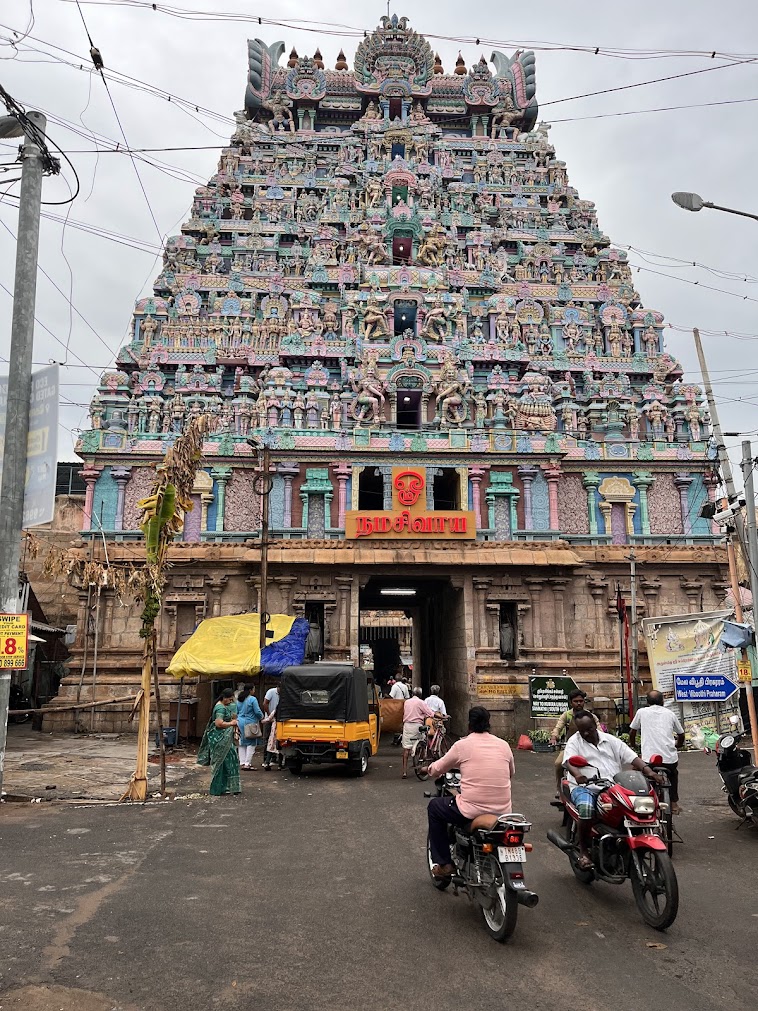
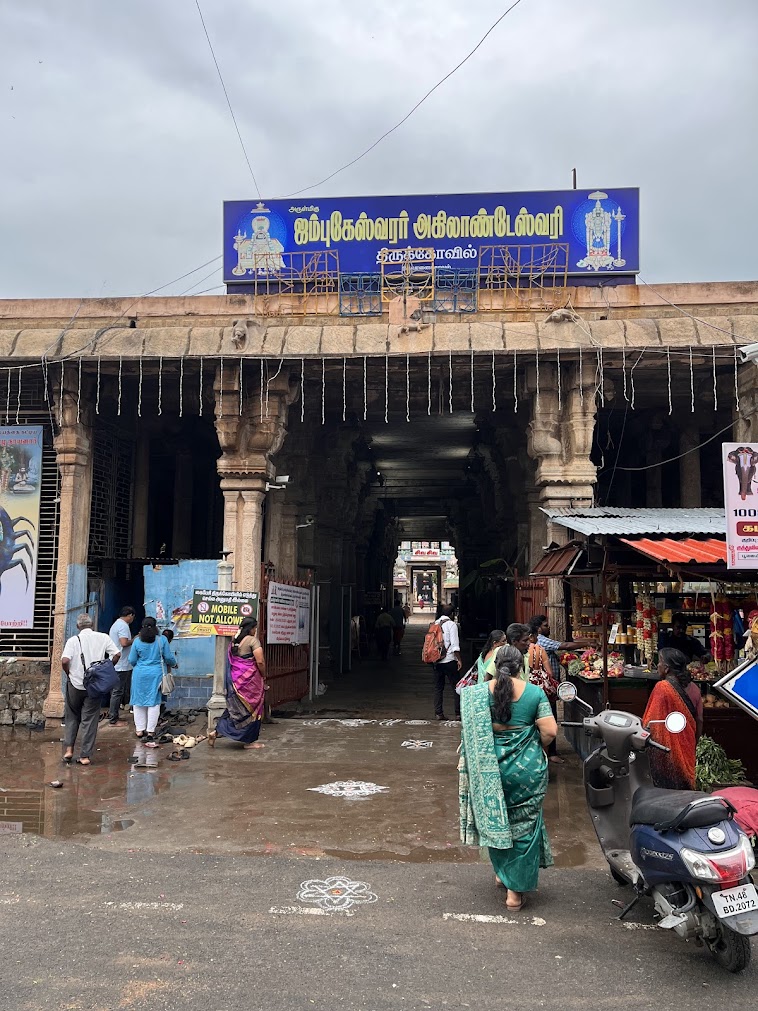

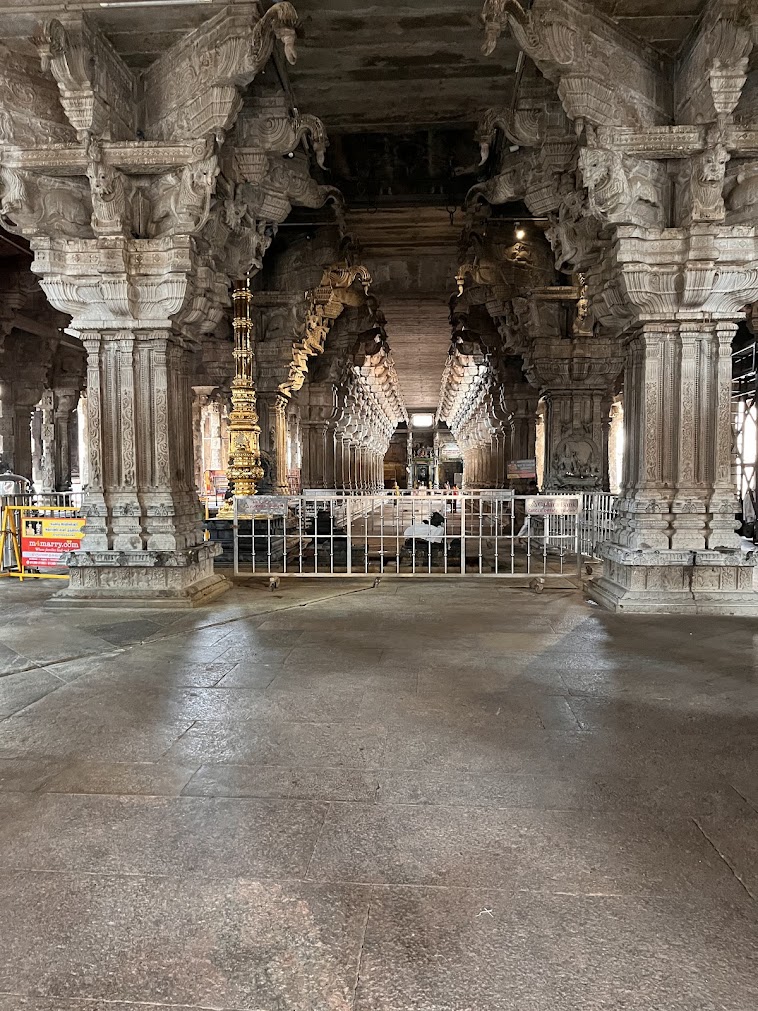
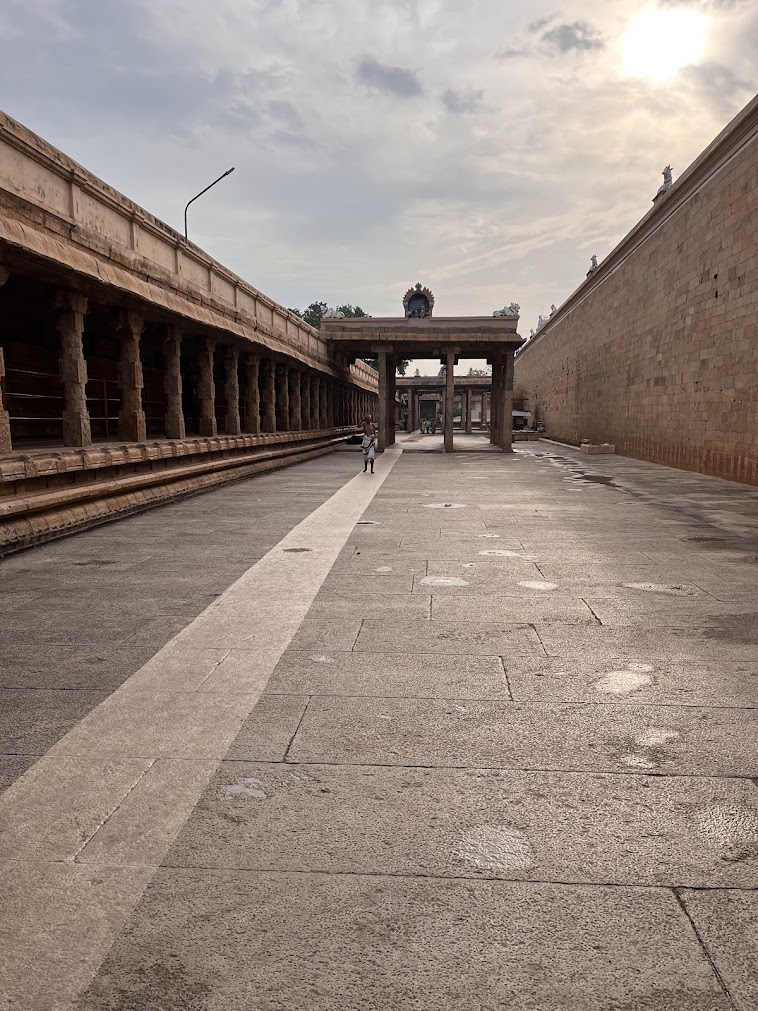

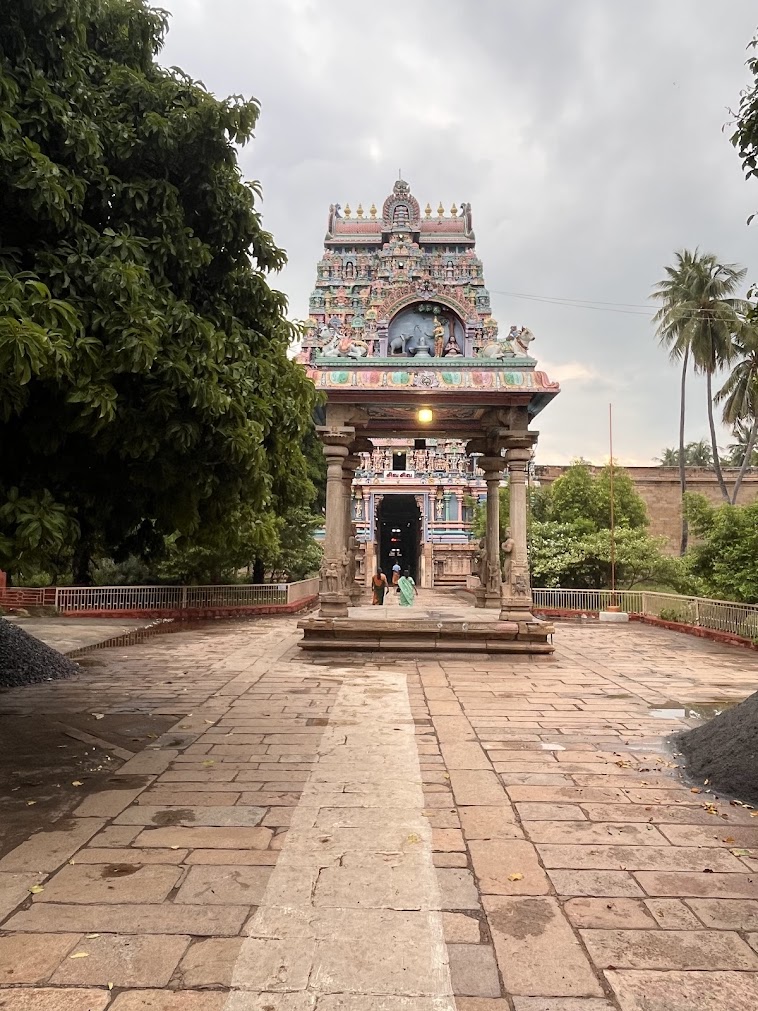
Excellent as usual
Well described, lifelike!
India is truly a land of ancient Temples. Unimaginable!! Very Well described.